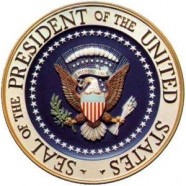
Essentially each Presidential candidate is a brand. They develop a special persona which they hope will emotionally appeal to their target audience, they own a distinct brand name (e.g. Jeb Bush or Hillary Clinton), and they make brand promises which they believe are relevant for their constituencies. These are the core principles of good branding. Ultimately a successful brand will want a relationship with its target customer that is based on trust, authenticity and credibility.
But why are these foundational attributes so lacking for every Presidential candidate in 2015? The Edelman Trust Barometer revealed that government and Congress are the least trusted institutions or people for the fourth consecutive year, hitting a new low of 41% in 2015. This glaring problem of mistrust did not happen overnight. These perceptions grew over time because past candidates’ promises did not honestly reflect their true values (e.g. Romney changing his tune to appeal more to extreme conservatives), their promises were never delivered (e.g. Governor Sam Brownback of Kansas promising that lower taxes would ignite economic growth in his state), and how the changing diversity of the American electorate was not fully acknowledged.
Further, behind this decline of trust is the absence of authenticity for these Presidential brands. John Grant, author of “The New Marketing Manifesto”, states that “authenticity is the benchmark against which all brands are now judged.” Trust and authenticity are closely related: trust reflects more of an emotion than a cognitive belief, while authenticity is a conclusion about one’s persona and set of values. Both require consistency, balanced with a willingness to adapt to the changing dynamics of your target audience, yet without undermining one’s core values and attitudes.
The primary elections generally are decided by a restrictive audience – members of either the Republican or Democratic Party. The brand messages of these candidates are designed to appeal to the passions of the most intense influencers in each party, intent on forming a strong bond with them. According to Pew Research in 2014, “steadfast and business conservatives”, 22% of the population, make up 36% of the “politically engaged” Americans, while the “solid liberals”, 15% of the population, make up 21% of these engaged. Their promises end up shaping the political persona of these candidates, and with the over-simplistic stereotyping by the media, the primary selection process pushes their brand image further to the right or left, beyond the interests of mainstream voters. All this undermines their sense of authenticity and even erodes their ability to connect with regular voters.
Then there is the sizeable yet less predictable political middle, 57% of the electorate, who are traditionally not as involved in the primaries, but will ultimately decide the Presidential election. This central segment has more divergent views, and many will vote based on their emotions such as trust, and who they feel is most “authentic”. If history repeats itself, Americans will hear a different, nuanced set of promises and values after the primaries; their previous positions aimed at the extreme ideological ends of the political spectrum during the primaries will become rationalized in less credible terms. The net result will be a revised brand image that is inconsistent, distrusted and less authentic.
The anatomy of the electorate continues to transform, especially with the emergence of Millennials and minority segments such as the 55 million Hispanics (17% of the population today). Generally most in these groups are not party members so their influence in the primaries is limited. Pew research in 2014 indicates that 50% of Millennials consider themselves “independent” (versus 39% for Generation X, the next highest), although many don’t trust government anymore and may not vote in the Presidential election.
There is a lesson here for business CEO’s (also very distrusted, at only 43% according to the Edelman Trust Barometer) and marketers, who should learn from politicians’ tendency to make promises that can’t be delivered. Research in a recent Ad Age article, “Three Hidden Reasons Why Brands Struggle With Authenticity”, reveals that executives often wear their “business hat” and voice opinions expected for their business persona, which often are not realistic or match what their customers want most. Their exaggerated or misplaced promises are a primary reason for the public’s lack of trust in them. It would make sense for Presidential candidates and business leaders to conduct a comprehensive brand audit of themselves (such as those we offer) to ensure they reach that elusive mark of “authenticity” before embarking on a new political or marketing initiative.


